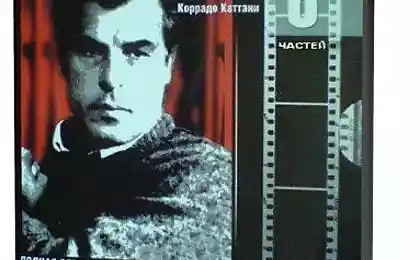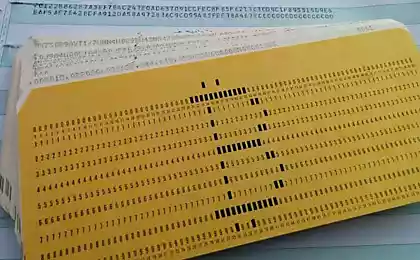1108
The origin of the characters

Percentage of «%»
The word "interest" is derived from the Latin. «pro centum», which means in translation "hundredth part". In 1685 in Paris the book "Guide to commercial arithmetic" Mathieu de la Porte. At one point it was about percentages, which are then designated «cto» (abbreviated from cento). However, it took compositor «cto» for the shot and printed "%". So because of a typo that sign came into use.
Ampersand «&»
Authorship is credited with an ampersand Marcus Tullius Tiro, devotional servant and secretary of Cicero. Even after Tyrone became a freedman, he continued to write Ciceronian texts. And in '63 BC. e. invented his own system of abbreviations to speed up letters, called "tironovskimi signs" or "tironovymi notes» (Notæ Tironianæ, originals did not survive), which were used until the XI century (so that at the same time feel more Tyrone and the founder of the Roman shorthand).
Question mark «?»
Found in printed books from the XVI century, but to express it fixed the problem much later, only in the XVIII century.
Mark mark comes from the Latin letters q and o (quaestio - search [response]). Originally wrote q over o, which are then transformed into a modern mark.
The exclamation point «!»
The exclamation point comes from the expression «note of admiration» (mark of astonishment). One theory of its origin, it was the Latin word for joy (Io), written with the letter «I» over the letter «o». For the first time the exclamation mark appeared in the "Catechism of Edward VI», published in London in 1553.
Dog, or commercial fl «@»
The origin of this symbol is unknown. The traditional hypothesis - medieval Latin abbreviation preposition ad (meaning "to", "to", "to", "y", "at»).
In 2000, Giorgio Stabile, a professor of Sapienza, put forward another hypothesis. In a letter written by a Florentine merchant in 1536, mentioned the price of one «A» of wine, and the letter «A» was decorated with curls and looked like "@" according to Stabile, it was the abbreviation for the unit of measurement of volume - standard amphora.
In Spanish, Portuguese, French @ symbol traditionally meant arroba - old Spanish measure of weight equal to 11 502 kg (12 in Aragon, 5 kg); The word comes from the Arabic "al-rub", which means "the fourth" (a quarter hundred pounds). In 2009, the Spanish historian Jorge Romance discovered reduction arroba @ symbol in the Aragonese manuscript Taula de Ariza written in 1448, almost a century before the Florentine letters studied Stabile.
Similar to @ signs found in Russian books XVI-XVII centuries - in particular, on the title page Sudebnik Ivan the Terrible (1550). Usually it is decorated with curl letter "az", indicating in Cyrillic numerals unit, in the case of Sudebnik - the first point.
Oktotorp or sharp «#»
Etymology and English orthography (octothorp, octothorpe, octatherp) words are controversial.
According to some sources, the sign comes from the medieval cartographic tradition where so designated village, surrounded by eight fields (hence the name «octothorp»).
In other news, it's a playful neologism employee Bell Labs Don MacPherson (born. Don Macpherson), appeared in the early 1960s, from octo- (lat. Octo, Russian. Eight), speaking of the eight "end" of the character, and - thorpe, referring to the Jim Thorpe (Olympic medalist, who was interested in McPherson). However, Douglas Kerr (born. Douglas A. Kerr) in his article «The ASCII Character" Octatherp "» says «octatherp» created as a joke of his own, as well as Bell Labs engineers and Herbert John Shaak Utlautom. Edition «The Merriam-Webster New Book of Word Histories» (1991) gives the spelling «octotherp» as the original, and considers the telephone engineers its authors.
Semicolon «;»
Semicolon first introduced Italian printer Aldus Manutius (ital. Aldo Pio Manuzio; 1449 / 1450-1515), who used it to separate opposing words and independent parts slozhnosochinёnnyh proposals. Shakespeare has used a semicolon in their sonnets. In the Russian text the comma and semicolon appeared at the end of the XV century.
Asterisk, asterisk or «*»
Was introduced in the 2nd century BC. e. in the texts of the ancient Library of Alexandria philologist Aristophanes of Byzantium to indicate ambiguities.
Brackets «()»
Parentheses appeared in 1556 Tartaglia (for radical expression) and later in Girard. Bombelli simultaneously used as a starting corner brackets with the letter L, and as an end - it is in the form of an inverted (1550); this record was the ancestor of the square brackets. Braces offered Wyeth (1593). Yet most mathematicians then preferred instead of brackets nadchёrkivat generated expression. In general use brackets introduced Leibniz.
Tilda «~»
In most languages superscript tilde sign corresponds occurring letters n and m, which in medieval cursive often written above the line (over the previous letter) and Inscription degenerated into a wavy line.
























